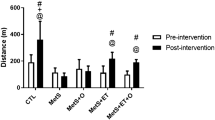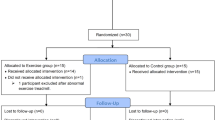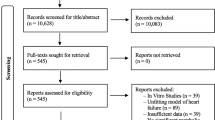Abstract
ABSTRACT: When cardiac output is critically lowered, whole body O2 consumption decreases and an O2 deficit accumulates. With restoration of cardiac output, an excess O2 consumption is expected in order to “repay” some or all of the O2 deficit. We tested the hypothesis that young lambs, with higher resting O2 consumption, cardiac output and growth rates than older lambs, would repay less of their O2 deficit because they have a higher proportion of nonessential metabolism. We reduced cardiac output acutely by inflating a Foley catheter in the right atrium of spontaneously breathing, sedated lambs at ages 2 (n = 5) and 8 (n = 5) wk. Each lamb was studied with low cardiac output periods of 30 and 60 min on different days. Aortic and pulmonary artery blood pressures, gases, and O2 saturations, venous Hb, and arterial lactate concentrations were measured every 10 min during baseline, low output, and 60 min of recovery. Oxygen consumption was monitored continuously. Oxygen deficit and excess O2 of recovery were calculated from the time integral of the difference between O2 consumption at baseline and during the respective study period. The average percent decreases in cardiac output (66.4 and 64.6%) and O2 consumption (38.1 and 35.1%) were similar in the 2- and 8-wk groups, respectively. There was no consistent relation between O2 deficit and O2 repayment in either age group. However, on average the 2-wk group repaid a significantly lower percentage (3 ± 16%, mean ± SEM) than 8-wk-olds (76 ± 29%). Moreover, lactate increased linearly with time and O2 deficit in both age groups, but lactate accumulated at a significantly lower rate in the 2-wk as compared to the 8-wk group for comparable deficits. We speculate that, during periods of very low cardiac output, 2-wk-old lambs not only decrease O2 consumption, but also decrease metabolic demands, possibly by suppressing nonessential metabolism. This results in fewer energy stores that need to be replenished during recovery. This is a potential mechanism for the greater tolerance of young animals to hypoxic stresses.
Similar content being viewed by others
Log in or create a free account to read this content
Gain free access to this article, as well as selected content from this journal and more on nature.com
or
Author information
Authors and Affiliations
Rights and permissions
About this article
Cite this article
Fahey, J., Lister, G. Response to Low Cardiac Output: Developmental Differences in Metabolism during Oxygen Deficit and Recovery in Lambs. Pediatr Res 26, 180–187 (1989). https://doi.org/10.1203/00006450-198909000-00003
Received:
Accepted:
Issue date:
DOI: https://doi.org/10.1203/00006450-198909000-00003
This article is cited by
-
Neonatal and pediatric intensive care — a new section inIntensive Care Medicine
Intensive Care Medicine (1993)



